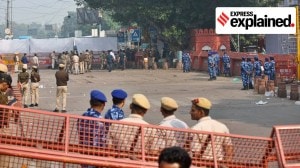Grain of truth
Power equations from the power gridWe have this pathetic hangover of a colonial past, to the effect that thesolution to all problems is f...

Power equations from the power grid
We have this pathetic hangover of a colonial past, to the effect that thesolution to all problems is from the mai baap sarkar and its corollary thatthe only way you can influence the sarkar is to fight it rather than opposeit. The problems of a modernising society and a developing economy arecomplex. There are no single answers. They require a creative dialoguebetween civil society and government. This does not mean surrender for, asthe late Raj Krishna never tired of telling us, governments are by natureknowledge-proof. But it does mean working out areas of agreement determinedby fact and necessity and then fighting about the things worth fightingfor.
But it takes two to tango and governments have also to state their position.A controversial area in India is the electricity sector. Governments aremade and unmade on performance and policies. Invective flows freely andsometimes even blood. On September 15, somewhat quietly, the CentralElectricity Regulatory Comm-ission released a terribly important documenta “consultation paper” on bulk electricity tariffs. We have the largestrural electricity network in the world with almost 90 percent villageselectrified and this paper was saying things which would affect everyIndian, so it was ignored.
The interesting thing about the electricity tariff paper is the soft andfirm style in which it presents choices to the country. It never leaves thedomain of fact, but it also does not at this stage force the choice. It isgently persuasive. It shows with great clarity and detail that you have thechoice of not having power if you don’t pay the existing cost.
In a detailed evaluation two of my colleagues had done with me of a StateElectricity Board, one of the best in India, we had shown that theirexisting cost could not be covered by a reasonable system of pricing, but iftheir repair and maintenance norms could achieve efficiencies achievedelsewhere in India and heat rates improved, it was possible to reduce costsand break even.
The so-called “fair price” methods compensate the producer for existingcosts even if he is inefficient, but do not force him to reduce costs. Costsfall with better operation and improved technology. Pricing must not be afetish in medieval concepts of fairness, but must reward those who reducecosts and innovate. In fact, it uses the same concept of long range marginalcost pricing and the fact that efficiency pricing has to compensate for thecapital costs of modernisation, but it leads to the advantages of reducedcosts of materials, energy and labour.
The bottomline however is that unless we compensate the producer forinvestments required for technology upgradation and let him keep some of thebenefits of better operation, we are condemned to shortages and high prices.The monopolist is not a villain of Hindi movies. He takes advantage of badpolicy rules and inelastic demand. The power tariff paper gives us an optionto get out of this trap.
The next step is then possible. If we get out of our fixation of penalisingefficiency and let the new rule-based systems work for some time, it will bepossible to really get into markets which work in the power sector throughreal time. This is really exciting. In 1997, as Power minister, wediscovered that if a sector grows in India, deficits soon run intosurpluses. By end-’97, a 7 per cent growth of power generation meant thatthere was excess capacity in all regions, but the south. We then agreed toship more power to the Southern grid, particularly from the east.
But the generators in the east, working at low capacities because of lack ofdemand, wanted to load their fixed overhead costs on their low sales andsell power to the south and west at around six rupees a unit. We becomeprisoners of the monsters we create. This was sorted out and power fromaround 100 MW of capacity started flowing in January ’98 and doubling thenext month.
Simultaneously, we worked on an availability tariff which uses an efficiencyprinciple to select the supplier for meeting grid demands. This, of course,is not liked by the existing producers who want full cost compensationrather than a efficiency price. The Power ministry has done remarkably wellin increasing inter-grid supplies since we are again in a situation ofexcess capacity, thanks to a high growth in recent months. Meanwhile, aPower Trading Corp-oration planned in ’97 has also been set up and willeventually trade power.
The power tariff paper shows that as generation capacities expand there willbe no alternative to efficiency criteria working on determining generatorswalking in or out of the grid. We will have to force the public sectorparastatals to accept this and nudge the IPPs into accepting that theyreally do not have the options of ignoring efficiency as a criteria. At thatstage, which I see about five years away, the regulator can sit aside andprovide a ground for fair trade in real time. In particular, they will thenprotect the interest of the small man.
In the Draft Bill I had introduced in Parliament in August ’97, we had takenspecial care to see that regulators were selected by an autonomous,high-level selection process. This has obviously work-ed and Dr Surendra L.Rao and his colleagues have given us a vision of obtaining cheap and qualitypower supply in the future. We must all decide to rise to the challenge itentails.






- 01
- 02
- 03
- 04
- 05

























